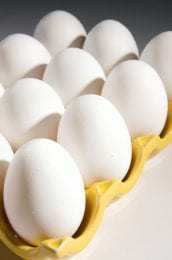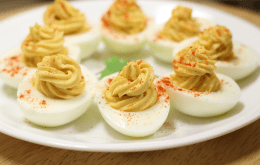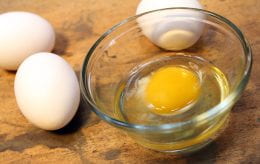
The heat of summer is a bit cooler with a dish of cold ice cream. A special treat in itself, but can be more special when homemade ice cream is the star. While ice cream is a cold product, it can support the growth of bacteria that could cause foodborne illness.
Eggs are a key ingredient in traditional homemade ice cream. They help add rich flavor, a light yellow color, help prevent crystallization and add a smooth creamy texture. But raw or undercooked eggs that are contaminated with Salmonella can survive cold temperatures and lead to foodborne illness.
To make homemade ice cream safely, here are some tips from University of Minnesota Extension.
Cooked egg base
- To make a cooked egg base: mix eggs and milk to make a custard base and then cook gently to an internal temperature of 160°F. This temperature will destroy Salmonella, if present.
- Use a food thermometer to check the mixture temperature. At this temperature, the mixture will coat a metal spoon. Try to resist the temptation to taste-test when the custard is not fully cooked!
- After cooking, chill the custard thoroughly before freezing.
- Try this recipe from the American Egg Board.
Egg substitutes
Egg substitute products also may be used. You may have to experiment with each recipe to determine the correct amount to add.
Pasteurized eggs
Another option is to use pasteurized eggs in recipes which call for uncooked eggs. Pasteurized shell eggs are available at some supermarkets and cost more. Commercial pasteurization of eggs is a heat process at low temperatures. It destroys Salmonella bacteria that may be present. Pasteurization has a small effect on flavor, nutritional content and functional properties of eggs.
Egg-less Ice Cream
There are many homemade ice cream recipes without eggs, and these would be a good option for those allergic to eggs.


 Easter is a great time to celebrate with family and friends. If you plan to have an Easter egg hunt with real eggs, here’s some food safety tips to keep in mind.
Easter is a great time to celebrate with family and friends. If you plan to have an Easter egg hunt with real eggs, here’s some food safety tips to keep in mind.

